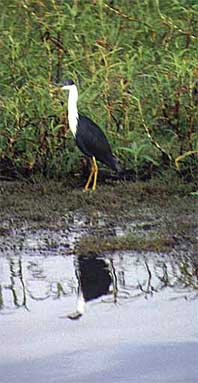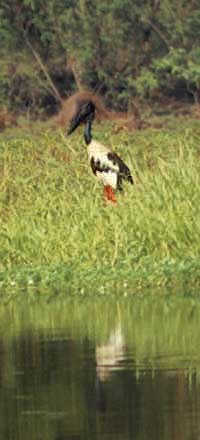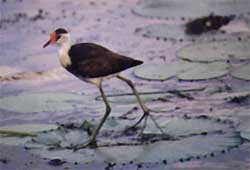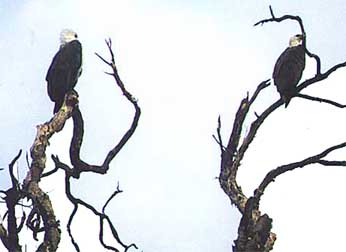| The 2-hour early morning cruise of the Yellow Waters allows you to see a large variety of water birds. Unlike the 4WD hiking and canoing tour, you don't need any degree of physical fitness to enjoy this part of the park. During the cruise that I took, I saw most of the water birds known to this area. Because it was early in the wet season, the water and therefore the birds were concentrated in a smaller area. As the wet season progresses and the water spreads over the flood plane, the birds spread out and visitors may not see the same great variety. | ||
 If you see a Pied Heron (Ardea picata) watch for the funky neck moves has he/she walks. |
 Black-necked Stork (Ephippiorhynchus asiaticus) is Australia's only stork. Is sometimes called a Jabiru, but is unrelated to Jabiru storks in South America and Africa. |
 Great Egrets (Ardea alba) are known to defend their feeding areas from other birds. |
| For all of the birds shown here, except the Sea Eagles, both sexes incubate the eggs. For the Sea Eagles, it is only the female. | ||


